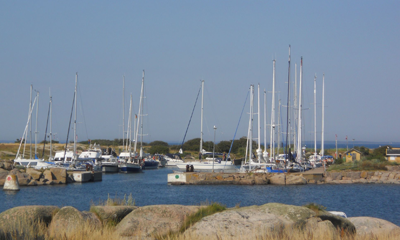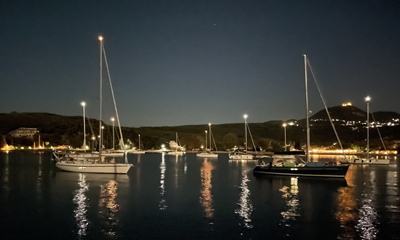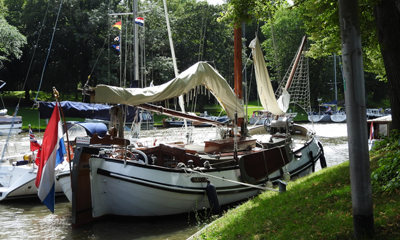Cruising Biscay
By the CA Biscay Section
Introduction
This page introduces the Biscay Cruising area, describing the different coastlines of the countries, their peculiarities, islands, inland seas, estuaries, rias and the must-see places to visit. There are also brief descriptions of the main marinas that accommodate cruising yachts.
Jump to content
The Biscay region
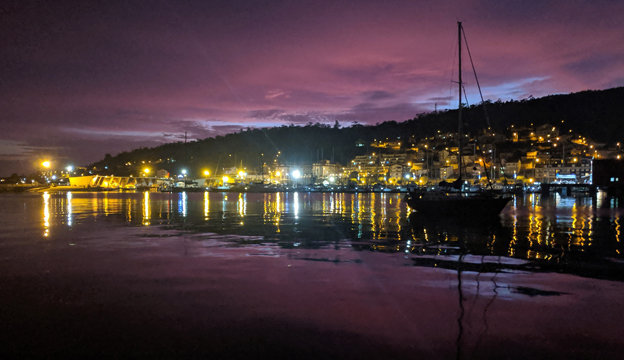
Combarro - Thomas Steventon
The 1,580 NM of Biscay Regions coastline, traditionally starts from L’Aber Wrac’h, rounds Finisterre and passes through the Channel du Four and around the bay of Biscay to Galicia (NW Spain), then down to Cabo Sao Vincente, before turning to the east to reach Gibraltar.
Portugal has two distinctively different coasts. The west coast, sometimes exposed, down to Cabo Sao Vincente and the more sheltered Algarve. A return Spain, the Andalucian coast and on to of Gibraltar.
Day sailing is generally simple with few off lying hazards and plenty of estuaries, harbours and rivers to explore. France has many modern marinas with dedicated visitor berths with a professional welcome and good facilities. Usually there are excellent cafes and restaurants close by, serving local dishes and regional wines.
The islands from Ouessant, past Quiberon, Ile d’Yeu, the ritzy Ile de Re to the Ile d'Oleron are wonderful places to visit. The islands are sometimes linked to the mainland by causeways or modern viaduct bridges. As you head southwards, and the weather and seas warm up, they progressively become chic French holiday destinations in the summer months.
The Brittany region with its steep slate roofed house and rocky coastline, soon transitions to terracotta pantiles over whitewashed hamlets behind long sandy beaches. This type of coastline extends from the Loire estuary for hundreds of miles southwards down to the Spanish border at Henday.
Once south of the Loire estuary, visiting yachts are advised to keep track of the forecasts for Atlantic swell entering the Bay of Biscay. Even in calm summer conditions, swell can arrive from stormy weather on the other side of the Atlantic. The long period ocean swells become shorter and steeper once they cross over the shallow waters of the continental shelf running along France’s Atlantic coastline.
Traversing the northern Spanish coast becomes more technical, with fewer rivers and harbours that can be entered, and in places, longer passages between them. Plan arrivals at river estuaries to occur just after high water and with low levels of swell. The unspoilt Ria Altas and Baixas are deep inlets and offer shelter from storms and Atlantic swell.
On the west coast of Portugal, harbours are conveniently located every 30M or so, but many have relatively shallow entrances. Swell can be dangerous here and should be studied carefully. Authorities close ports when conditions make entry dangerous. During the summer months the NE Trade winds soon become established and can hinder the passage north.
Once around Cabo de San Vincente and the Algarve, these winds are offshore and decrease significantly further to the east. Eventually the dominant feature becomes the winds in the Straits of Gibraltar. A strong easterly Levanter can sometimes reach as far as Faro, Portugal. The winds in the Straits blow from an easterly or westerly direction in equal measure and can reach gale force. These strong winds and tides in the Straits require some planning to reach Gibraltar.
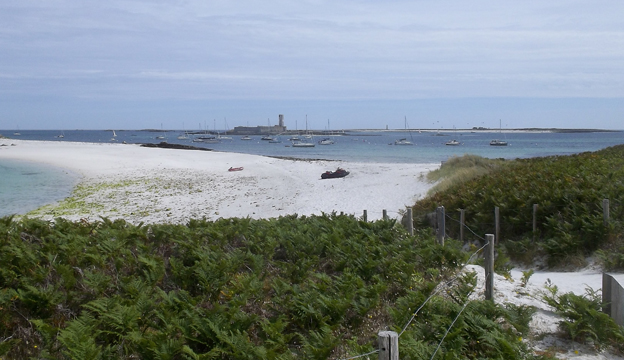
The Glenans - Michael Prewitt
Weather
The Bay of Biscay’s reputation for dangerous mountainous seas is mainly due to winter storms tracking across the Atlantic from the American east coast. During summer months the situation is significantly better, when a large high pressure system sitting over the Azores can create ideal winds for sailing across, or if time permits, around the Biscay coast.
One should regularly monitor weather forecasts while in Biscay to ensure, before any unseasonable weather arrives, that suitable shelter is sought in good time. As noted earlier, long period swell, from Atlantic storms far away, may develop into short steep seas once they encounter the continental shelf that runs along the coastline of France.
Strong winds
During the summer months a persistent north easterly develops around the NW corner of the Iberian peninsula. This occurs due to summer low pressure generated by the heat that develops over central Spain and the Azores high pressure to the west. The winds are further accelerated at sea level by the hills and high ground of the Galician coastline. When returning northwards the worst of the head winds can be avoided by keeping around 10 to 15 miles off shore.
Orcas
Interactions with orca occur regularly throughout the Biscay Section. The latest advice and guidance on the CA’s website can be found here. There are websites that track the annual migration of the orcas and provide a traffic light indication of their sightings along the Iberian coasts.
Further information:
When to go
Summer, typically from early May through to late September. Fairer weather starts earlier and last later the further south you cruise. During these periods settled weather is typical, although periods of higher winds and rain occur as fronts pass over the region.
Mid Seasons, between summer and winter will find cooler and less settled weather. Many harbourside café and bars close outside of the summer season.
Sailing during the winter in Biscay is mainly for passage making. Careful planning to identify periods of settled weather is recommended . Storm bound periods in harbours can be lengthy. Frosts are less likely south of La Rochelle, but snow in Arcachon and from San Sebastian to A Coruna is not unknown
Peak Season Western France becomes very busy from their Fete Nationale held on the 14th July through to the end of August. During this period the islands and the marinas and harbours become very busy with day cruising yachts from Lorient down to the Ile d’Oleron. The glitzy harbours like St Martin on the Ile de Re can be rafted 5 or 6 boats deep, while less popular rivers and ports such as Royan or Rochefort on the Charente river are relatively unaffected.
Northern Spain and the Galician coast tend to attract fewer yachts, mainly due to the distances that need to be covered to voyage there and back from France in a two week holiday period. Spanish ports and harbours are likely to be noisy and lively when summer festivals and Saints days are celebrated.
The weather in Portugal is dominated by the jet stream and weather systems in the Atlantic, most noticeably the Azores high. It is best to cruise south on the west coast during the summer months. The NE trade winds become established between June and September. These can be strong, increasing throughout the day, so a passage up the coast is easiest early or later in the season. The Algarve, through to Gibraltar, is more sheltered and it is possible to cruise here throughout the winter, with a watchful eye on the weather.
Yacht support
Yards and chandleries vary widely around the Biscay coast
France with its passion for sailing have good or excellent facilities in most ports and marinas. The marina capitaineries are the first place to enquire should you need assistance. They are well connected with the various yards and their experts.
Like the UK, France has several major chandlery chains that have showrooms in many of the ports. Online chandleries can also be used such as SVB24.com who will deliver items across Europe.
The yacht support in Spain is more orientated towards the commercial end of the marine sector. There are facilities in the main harbours such as Hondarribia, Bilbao, Santander, Gijon , A Coruna and the Illa de Arousa. The boatyard at Sada to the south of A Coruna, is probably is the best on the north coast if repairs are required.
Finding chandleries with good ranges of equipment is a little harder to find, but there are some specialist stores such as Pombo in A Coruna. Online stores such as SVB24.com is an alternative option.
Support for cruising yachts throughout Portugal is very good and English is spoken. Marina standards are high and mooring conventional. Good boatyards exist in Lisbon and on the Algarve where services and standards are a match for the UK. In Andalucian Spain support is available and marinas are well found but most require work to be undertaken by a local professional rather than individuals.
Gibraltar has no shoreside facilities, the nearest are in Marina Alcadeisa, Spain. There are chandlers and many marine services close to Ocean Village Marina.
The CAptain’s Mate app has excellent information regarding the harbours where yacht repairs and support can be found.
Passage planning
When visiting the Biscay cruising area, the RCCPF pilotage guides published by Imray are excellent references to consult. The provide passage distances, hazards that may be encountered, seasonal conditions and what can be found ashore once you have reached your destination.
Pilot guides available from Imray:
